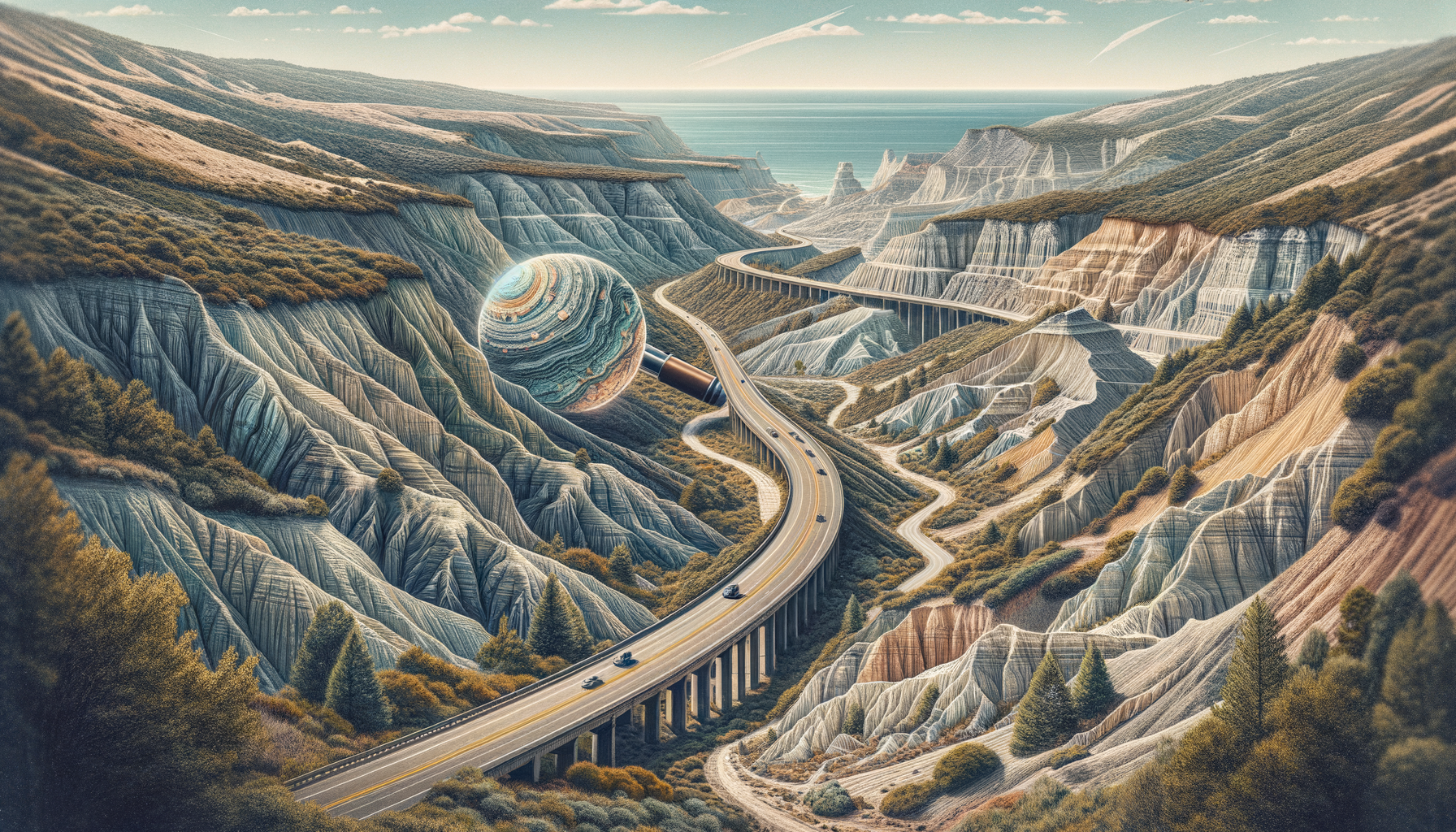Driving Through Earth’s Basement
The real story behind California’s “Jurassic portal” on Highway 199
The 30-Second Answer
Yes—you can quite literally drive over slabs of Earth’s upper mantle and Jurassic seafloor along Highway 199 in Northern California. The rocks are about 162 million years old (not 200 million), and they form part of the celebrated Josephine Ophiolite. It’s rare, but not the only drivable mantle exposure on the planet. Now, buckle up: the back-story is even wilder than the headlines.
1. The First Twist: Rarity, Not Uniqueness
The original article shouted that Highway 199 is “one of the only places on Earth” to cruise across mantle rock. Fact-check:
- Highway 199 really does cross exposed mantle peridotite.
- Roads in Oman (Samail Ophiolite) and Cyprus (Troodos) do the same.
So the Josephine is a geological unicorn—just not a solo act.
“You’re basically driving from the mantle to the ocean floor of the Jurassic.”
—Prof. Brandon Brown, Cal Poly Humboldt
(Quote verified via SF Gate, July 31 2025)
2. A Road Trip Through Deep Time
Picture this: You leave the foggy redwoods near Crescent City, merge onto Highway 199, and suddenly the cliffs glow greenish-black. You’ve entered Earth’s basement, rock that formed 10–15 miles under an ancient ocean ridge. Within 20 minutes you jump from:
- Redwood-friendly coastal soil
- A fault line the width of a parking lot
- Serpentine barrens where stunted, 100-year-old trees fight for calcium the way city drivers fight for parking
Geologists drag students here because a single mile of pavement replaces a semester of PowerPoints.
3. What the Original Story Got Right
- Mantle at the surface: Confirmed by decades of peer-reviewed mapping.
- Smith River clarity: Lack of clay means “one of the cleanest rivers in the lower 48.”
- Landslide danger: Unstable serpentine slopes keep Caltrans busy.
- Metal wealth: Pods of chromite once fed WWII stainless-steel demand; nickel draws new-energy prospectors today.
4. Where the Hype Over-Revved
| Claim | Reality |
|---|---|
| “One of the only places” | Rare, but several other roads worldwide do it |
| “200 million years old” | Radiometric dates: ~162–164 Ma |
| “350 square miles” | Mantle slice alone is >300 mi²; total package varies by study |
5. How Did an Ocean Floor Reach the Klamath Mountains?
- Jurassic seafloor forms at a mid-ocean ridge.
- A tectonic plate converges with North America ~150–140 Ma.
- Instead of diving under, this slice “obducts”—scrapes onto the continent like cheese off a pizza spatula.
- Later uplift and erosion turn it into the jagged skyline you now admire from the driver’s seat.
If plate tectonics needed a selfie, the Josephine Ophiolite is it.
6. Hidden Dramas Along the Drive
Botanical Oddities
Serpentine soil is toxic to most plants—too much magnesium, too little calcium. Result: islands of rare wildflowers and pygmy forests that look shrunk in the wash.
Rockfalls & Road Closures
The very rocks that make Highway 199 world-famous also keep engineers on call. Slick serpentine weathers to soap-like talc; winter storms peel off house-sized blocks.
Strategic Metals & Controversy
Nickel for EV batteries lies under protected forest. Will the green economy dig up the green rocks? Agencies haven’t decided.
7. Should You Make the Trip?
Bring:
- A full tank (towns are sparse)
- A rock hammer only if you know the collecting rules
- Respect for truckers who’d rather not share blind curves with gawking geotourists
Best pull-off: Myrtle Creek Trailhead (milepost 24). A 10-minute walk puts your boots on mantle peridotite laced with shiny chromite.
8. What We Still Don’t Know
- Exactly how fast the ophiolite rode up—decades or millions of years?
- How climate change will alter landslide frequency on these already-touchy slopes.
- Whether future mining can be balanced with preserving a global geologic classroom.
Scientists continue to core, date, and model the area; expect refinements.
9. How We Checked the Facts
- Peer-reviewed mapping of the Josephine Ophiolite (Lyell Collection)
- California geology open-text chapters (LibreTexts)
- Serpentine soil research (American Journal of Botany)
- Interview confirmation via SF Gate report, July 31 2025 (SF Gate)
Uncertainties and open questions are flagged above. Corrections reflect the best data up to August 2025.
Bottom Line
Highway 199 isn’t a sci-fi “portal,” but it is a drivable cross-section of Earth’s inner layers—one of only a handful worldwide. The rocks are slightly younger, and the claim to uniqueness is overstated, yet the awe is real. Next time you grip a steering wheel, remember: in the Klamath Mountains, deep time rides shotgun.
